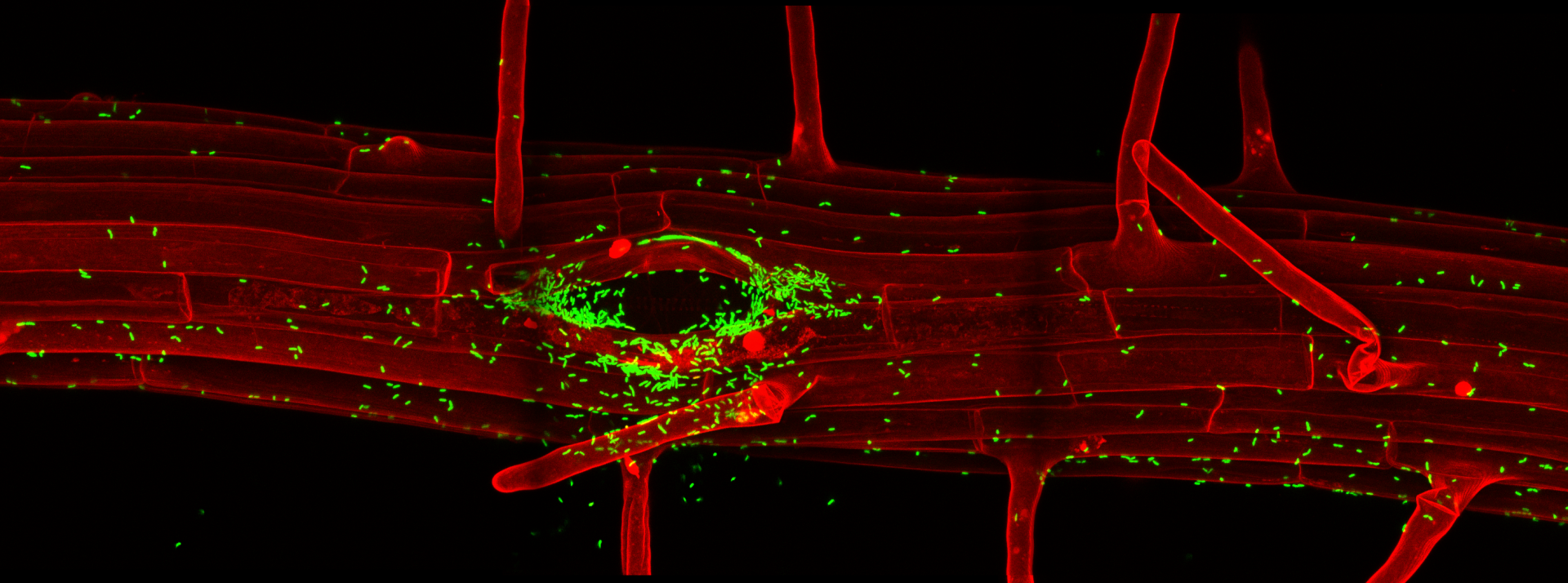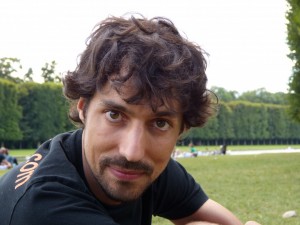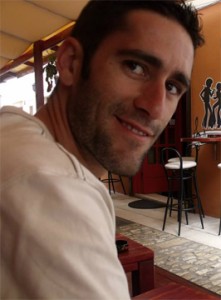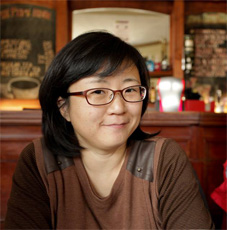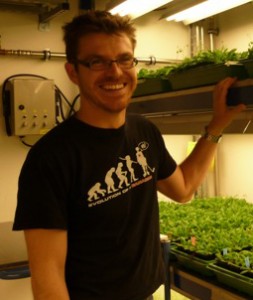Yan Ma, Former Postdoc.
Yan is now Junior group leader at the GMI in Vienna.
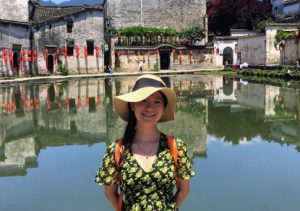
Yan is originally from Suzhou, China. Following her interest in plants from a young age, she moved to the UK in 2009 to study Plant Science at the University of Manchester, and later obtained a PhD on plant disease resistance genes. In the group of Prof. Jonathan Jones in The Sainsbury Laboratory (Norwich), she investigated how a resistance gene pair from Arabidopsis recognizes different bacterial pathogens in order to activate defense. Her PhD thesis (2016) and follow-up work unravel functional mechanisms of these resistance proteins at molecular level: from perception of pathogen molecules to the subsequent conformational changes that initiate defense signalling. Yan joined Niko’s group in July 2018, because she is fascinated by the ‘integrity surveillance’ signalling pathway in plant roots, which functions to establish a continuous water tight barrier (the Casparian Strip) rather than to monitor pathogen invasion. She was awarded a FEBS long-term fellowship to exploit this powerful system to uncover missing signalling modules and potential cross-talk with defense signalling.
Ursina Rathgeb, former PhD student
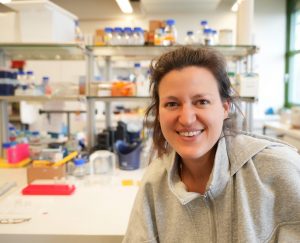
Ursina holds a MSc in Plant-Microbe Interactions and a BA in History of Modern Times of the University of Fribourg. Under co-supervision of Prof. Didier Reinhardt and Dr. Didier Schaefer she explored during her Master the functionality of the symbiosis relevant Vapyrin gene in the moss Physcomitrella patens. In the meantime, she discovered an ongoing fascination for live cell-imaging using confocal microscopy. As an intern in the Research Institute for Organic Agriculture (FiBL) she worked on field trials with seed and soil born pathogens. And in the national Research Institute for Snow, Forest and Landscape (WSL) she analysed historic data of drought damage in Swiss forests since 1856. Recently, she worked as a research assistant in the research group of Dr. Ora Hazak on establishing stable tissue culture transformation of tomato. Now, as a PhD candidate in a joint project with the research group of Dr. Christoph Keel at DMF and Prof. Harm-Anton Klok at EPFL she will be working on visualising bacterial chemotaxis towards plant roots. The aim of the project is to explore the potential of using plant-beneficial bacteria as vectors for the active delivery of biodegradable nano bodies directly to roots.
Robertas Ursache, former Postdoc
Robertas is now group leader in the Center for Research in Agricultural genomics In Barcelona.
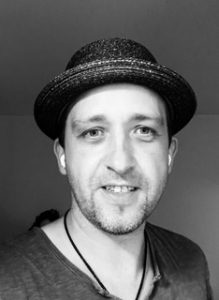
Robertas is from Lithuania. He studied Molecular Biology at the Vilnius University, Lithuania. He obtained his Masters and PhD at the University of Helsinki, Finland, in the group of Professor Yrjö Helariutta. During his PhD he studied vascular development in Arabidopsis thaliana and he was particularly interested in xylem specification, as well as in uncovering novel mechanisms of phloem sieve plate formation. After his PhD he continued his work, focusing particularly on phloem development and symplastic communication. Robertas joined the Geldner lab in August 2015 and he aims at uncovering the mechanism of Casparian strip remodelling during lateral root emergence. To achieve that, he will employ functional genomics, live-cell imaging and advanced electron microscopy.
Inês Barbosa, former Postdoc
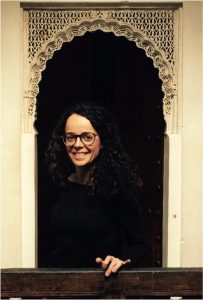
Inês is from Portugal. She studied Biology at FCUL (Lisbon) and did her Master’s thesis on the impact of last century CO2 increase on alpine meadows water-use efficiency, in the group of Prof. Hans Schnyder, TUM (Munich). Later, she discovered Arabidopsis genetics in the group of Dr. Paula Duque at the beautifully located and active research institute IGC (Oeiras, Portugal). For one year, she investigated the role of RNA splicing regulators, SR proteins, in abiotic stress responses. Curious on auxin transport and plant development, she was back in Munich to do her PhD in the lab of Prof. Claus Schwechheimer, TUM. There she studied the polarity and trafficking of an auxin transport regulating kinase, D6PK. She discovered D6PK plasma membrane targeting is very dynamic and essential in maintaining PIN phosphorylation and active auxin transport and, that D6PK is anchored to membranes by ionic interactions with phospholipids. She joined Niko’s group in May 2017 where she will dissect the molecular mechanisms behind CASP proteins recruitment to the Casparian strip, their membrane domain organization properties and role in establishing the lignin polymerizing complex.
Kian Hematy, former Postdoc
Kian discovered plant science during his undergraduate (1998-2000) with a part-time technician training in the laboratories of Loïc Lepiniec and Jan Traas (IJPB-INRA Versailles, France) studying respectively seed biology and meristem function in Arabidopsis. He obtained his Master at the University of Orléans and performed his training internship during a semester (2002) in the laboratory of John Mundy (Copenhagen University, Denmark) working on programmed cell death. He performed his PhD thesis (2003-2006) studying cell wall integrity signaling under the supervision of Herman Höfte (IJPB-INRA Versailles). He then went to California for a joint-postdoc in the laboratories of Chris and Shauna Somerville working on different aspects of cellulose biosynthesis and mechanisms of non-host resistance toward powdery mildew (in Stanford 2007 then UC Berkeley 2008-2009). In 2010 He obtained a permanent research scientist position at the IJPB-INRA Versailles in the team of Jean-Denis Faure working on lipids synthesis and its role in membrane organization and during plant development. He is currently performing a sabbatical in Niko’s team working on the establishment of the Casparian-Strip Domain and of cell polarity in the endodermis.
Aurélia Emonet, Former PhD student
Aurélia is now Postdoc at Max Planck Institute for plant breeding research in Germany.
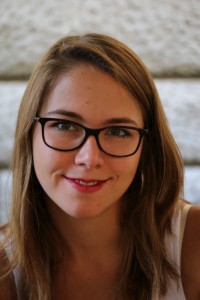
Aurélia got her bachelor degree at the University of Fribourg, where she carried out a short project on C.elegans sex determination in the group of Alessandro Puoti. Determined to study plants rather than worms, she joined ithe MSc in Molecular Life Sciences at the University of Lausanne in 2013. There, she integrated into the Geldners lab, working on the characterization of superoxide dismutases and laccases involved in Casparian strip lignification. Staying in the same department, she did her master project in the group of Philippe Reymond, where she analysed how the eggs of Pieris brassicae are able to highjack plant defences through an antagonistic interaction between salicylic acid and jasmonate pathways. After a short internship in the lab of Enrico Martinoia (University of Zürich), where she was interested in the impact of PDR1 strigolactone exporter overexpression on mycorrhization of petunia, she returned in September 2015 in Niko Geldner’s lab as a PhD student. The aim of her project is now to analyze the flg22-induced immune response in the different cell layers of the root, as well as to investigate the role of the endodermis in defense.
Andreas Kolbeck, Former Phd student
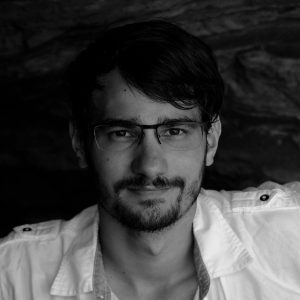
Andreas obtained both his Bachelor (2012) and Master (2015) degree studying at the Heidelberg University in Germany. During his studies, he focused on plant biology and acquired a background in various imaging techniques, ranging from subcellular EM-analysis to live-imaging and large-scale phenotyping. For his Master thesis, he performed a functional characterization of a receptor-like protein as part of a newly found cell wall feedback pathway in Arabidopsis thaliana. Having finished his studies, Andreas decided to continue working in plant sciences and joined the Geldner lab as a PhD student in September 2015. Here, his projects include the investigation of the physiological roles of the Casparian Strip as barrier for ion transport.
Feng Zhou, Former Postdoc
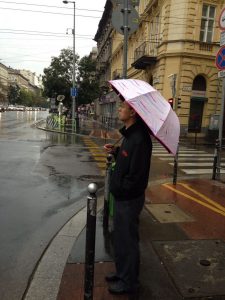
Feng comes from China. Since August 2006, under the supervision of Prof. Jianmin Wan, he studied at Nanjing Agricultural University and the Institute of Crop Science, Chinese Academy of Agricultural Sciences (CAAS) in Beijing. His graduate work focused on exploring the molecular mechanism of strigolactone signaling. Using a gain-of-function rice mutant displaying a increased-tillering and dwarf phenotype, he identified a new protein DWARF 53 which acts as a repressor of strigolactone signaling in rice. Feng obtained his PhD at Nanjing Agricultural University in June 2014 and then received an EMBO Long-Term Fellowship to join the Geldner lab in January 2015. In the Geldner group, his work will focus on elucidating the role of the endodermal barrier in root immune and stress responses. To reveal this, a set of sensitive, cell-type specific immune response marker lines will be established. Feng is also interested in the understanding of the role of strigolactone distribution and signaling in the endodermal cell layer growth and development.
Nelson Rojas-Murcia, Former PhD Student
Nelson is now Postdoc at Umea Plant Science Centre in Sweden.

Nelson has a bachelor’s degree in Agronomic Engineering. To pursue his interest in fundamental biology, he left his original Colombia to move to Switzerland where he then completed an MSc in molecular life sciences at the University of Lausanne. After a short master’s project in the Geldner’s lab, working in the characterization of proteins involved in the establishment of the Casparian strip in Arabidopsis, he went downstairs in UNIL’s Biophore building to work in microbiology. There, he focused his project to understand how the multidomain, large-size proteins named non-ribosomal peptide synthetases are able to produce small non-ribosomal peptides in Pseudomonas aeruginosa. These peptides usually display biologically activity and some of them are used as antibiotics and as agents to treat cancer, yet how they are synthesized is not fully understood. After several experiments involving protein radio-labeling and mass spectrometry Nelson decided to come back to work in Arabidopsis to deploy biochemistry along with in vivo experiments to understand how lignin is produced in the Casparian strip.
Peter Marhavy, Former Postdoc
Peter is now Assistant Professor at the Umea Plant Science Centre in Sweden.
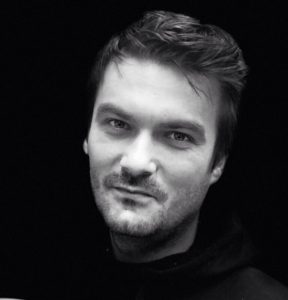
Peter comes from Slovakia, where he obtained his Bachelor (2006) and Master’s (2008) degree in Comenius University, Faculty of Natural Sciences in the department of Molecular Biology with specialization on Acetobacter Identification. For his PhD studies he joined group of Eva Benková VIB Department of Plant Systems Biology, Ghent University, Belgium. During his PhD Peter was studying, how cytokinin a crucial regulator of plant development through PIN1 lytic degradation enhancement, not only to control the auxin transport capacity, but also possibly to be part of a mechanism determining the auxin stream directionality. After obtaining his PhD degree (2012) Peter continued as a postdoctoral researcher in the group of Eva Benková at the Institute of Science and Technology IST Austria. Peter received a FEBS grant to join the Geldner lab in February 2015. In the Geldner group, his work will focus on the mechanism(s) of CASPs localization, as well as the mechanisms by which internal and external signals are integrated into the distribution of CASPs in order to generate a coordinated, multi-cellular tissue.
Tonni Grube Andersen, Former Postdoc
Tonni is now group leader at the Max Plant Institute for plant breeding research in Germany.
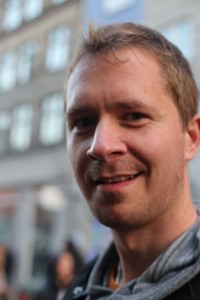
Tonni is from Denmark. He obtained his Masters and PhD at University of Copenhagen at the Center for Dynamic Molecular Interactions (DynaMo). His previous work includes elucidation of transport and biosynthetic mechanisms of the defense compounds glucosinolates in the model plant Arabidopsis thaliana. After his PhD he continued his work, and investigated protein-protein interactions in glucosinolate biosynthetic pathway using Y2H and FRET-FLIM analyses. Tonni received a Marie Curie grant to join the Geldner lab in February 2014. Tonni’s project revolves transcriptional identity of individual cells in the endodermis and molecular identification of the non-suberized “passage cells”. He aims at characterizing molecular markers for passage cells that will allow us to study the behavior of endodermis cells during a variety of abiotic stresses. To unravel this, he will employ single-cell transcriptomics, functional genomics and live-cell imaging.
Satoshi Fujita, Former Postdoc
Satoshi is now Research scientist CNRS at the University of Toulouse.
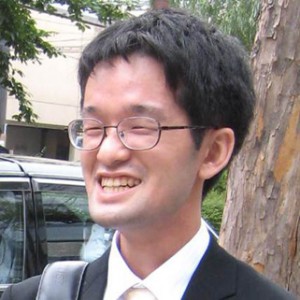
Satoshi is originally from Kobe, Japan. He obtained his bachelor analyzing one of the receptor-like kinases in tobacco suspension cells under the supervision of Prof. Toru Matoh in the faculty of Agriculture Kyoto University, Japan. By this experience, he was motivated to start the plant cell biology, so he decided to move to NAIST (Nara Institute for Science and Technology), where is located one of the most active research institutes for plant biology in Japan. During his Masters and PhD, he worked with Prof. Takashi Hashimoto’s group, which focuses on the organization of microtubules and their function. During his PhD, he found a novel atypical kinase domain, which can destabilize the inter-phase cortical microtubules through alpha-tubulin phosphorylation under the hyperosmotic stress. After finishing his PhD, he found an interest in how cells and tissues can properly coordinate the structures in the context-dependent manners. He joined Niko’s group in May 2014. He has just started to clarify functional relationships among various Casparian strip-forming genes, especially from phosphorylation pathways.
Marie Barberon, Former Postdoc
Marie is now Assistant Professor at the University of Geneva.
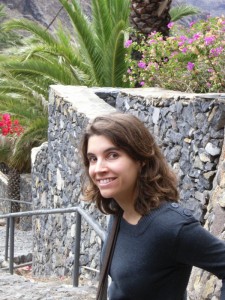
Marie studied Plant Biology at the University of Montpellier II, France. She did her Masters thesis and PhD in the department of Biochemistry and Molecular Physiology of Plants (BPMP) in Montpellier. This department is specialized in the study of plant hydromineral status and plant responses to abiotic stresses. As a Master student she joined the group of Pr Jean-Claude Davidian to characterize sulfate transporters functionally. During her PhD she worked on iron transport and signaling with Dr Grégory Vert. She was particularly interested in the trafficking of a metal transporter and the relations between its localization and activity. Marie joined the lab in December 2011 where she is dissecting the function of endodermis as a barrier for the radial transport of nutrients.
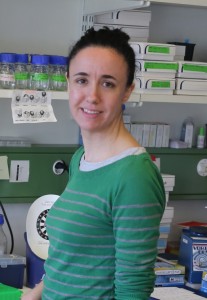
Verónica G. Doblas, Former Postdoc
In September 2020, Verónica started her own research line at the Instituto de Hortofruticultura Subtropical y Mediterránea “La Mayora” (IHSM-UMA-CSIC) with a Ramón y Cajal contract. She is interested in the characterization of new roles of small signaling peptides during tomato fruit formation. Recently, in June 2022, se has received The Plant Journal Fellowship Award for young researchers.
Link to my web site:
Alexandre Pfister, Former Phd student/Postdoc
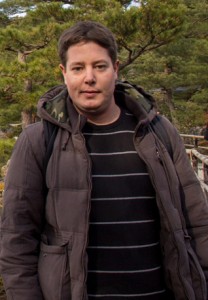
Alexandre obtained his master degree in March 2010 in the University of Lausanne. He joined Niko Geldner’s lab in February 2009 to do his master project on the endodermis of Arabidopsis thaliana. The project focused on CASP1 localization, a member of the CASPs family. Using site-directed mutagenesis, highly conserved amino acids within the CASPs were replaced in CASP1 and the different construct were expressed under CASP1 promoter and fused to GFP. The subcellular localization of these different CASP1 variants was then analyzed by confocal microscopy. Interestingly, it could be shown that some amino acids in the second extracellular domain of CASP1 were important for the correct CSD localization. Because his interest in endodermis development, including Casparian strip formation increased during his master project, he began his PhD in the same lab in July 2010. Unfortunately, no specific mutants with defective CS were available until now, it was then not possible to test in which conditions this specialized structure is indeed important and how plants would respond to its absence. Recently, such a mutant encoding a LRR-RLK with an impaired endodermal barrier was found by forward and reverse genetic approaches. The aims of his project was to understand the role of this receptor-like kinase in CS development and to characterize the phenotype of its corresponding mutant in detail.
Joop Vermeer, Former Post doc
Joop is now Full Professor at the University of Neuchâtel.
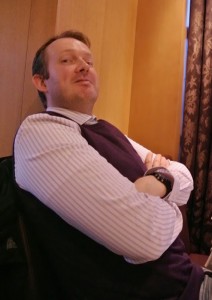
Joop did his PhD research in the lab of Dorus Gadella where developed genetically encoded fluorescent lipid biosensors and how to use them to image phosphoinositides in living plants. After this, he moved to the lab of Teun Munnik for a post-doc to study the role of phospholipids in plant growth and development. Subsequently, Joop received a Marie Curie grant to join the Geldner lab in February 2010. Joop is interested in the role of the endodermis during lateral root formation and emergence. He wants to understand the cell fate of the endodermis during this process, but also when the CS disappears, which factors are needed for this process and how the CS of the lateral root gets re-connected with the CS of the primary root. To solve this, he uses functional genomics and 4D live-cell imaging.
Frédéric Brun, Former technician
Frédéric comes from Montpellier (France), where he obtained his Bachelor (2009) and a Masters in Functional Plant Biology (2011). His first scientific project was performed in the group of Christophe Maurel, where he studied the transport of H2O2 across aquaporins leading to aperture/closure disorder in Arabidopsis thaliana. He did his Masters thesis in Alain Gojon’s group. He investigated nitrate responses controlled by the nitrate transceptor NRT1.1, namely the stimulation of root growth, and the regulation of genes related with the nitrate assimilation pathway (other transporters and enzymes). After finishing his Masters, he decided to move in Switzerland, where he got a position as Research Assistant in the Centre of Integrative Genomic of Lausanne (UNIL). Here, his work was to perform genetic and biochemical analysis of mammal’s circadian cycle genes. In 2013, he joined Niko Geldner’s group. Here he is performing, in one hand, confocal and two-photon imagery on some transgenic plants and in the other hand, biochemistry on Casparian strip membrane domain proteins.
Enrique Neumann, Former postdoc
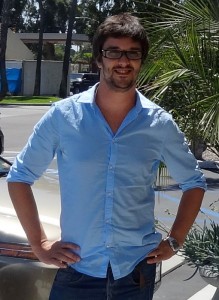
Enrique is originally from Montevideo, Uruguay. He obtained a Degree in Biology of the University of Santiago de Compostela, Spain, in 2009. As an undergraduate he worked in the Department of Physical Anthropology with the group of José Luis Blázquez Caeiro. He finally specialized in Plant Biology, and collaborated reclassifying the herbarium of the Museum of Natural History of the University. He carried out a PhD at Gwyneth Ingram’s lab at the University of Edinburgh, Scotland and later at the École Normale Supérieure de Lyon, France. There he worked characterizing the putative role of the phytocalpain DEK1 in mechanosensing. He joined our group as a Postdoc in May 2013, where his main interest was to study the role that the endodermis plays in pH and calcium homeostasis. He also worked to develop novel ways to phenotype the functionality of the casparian strip.
Sadaf Naseer, Former PhD Student
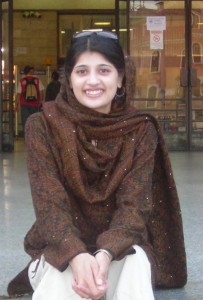
Sadaf obtained her master degree (Masters 1) in Agrobiosciences with specialization in Food safety from University Paul Sabatier, Toulouse, France in July 2006. She continued her studies on the same subject and obtained a Masters 2 degree in July 2007 from same University. She worked at the «Laboratoire de Gènie Chimique, Départements de Toxicologie et Sécurité Alimentaire» with the team of Dr. Annie Leszkowicz at the École Nationale Supérieure Agronomique de Toulouse (ENSAT), France on the molecular mechanism of nephrotoxic mycotoxins and a toxin of herbal tea (Aristolochic acid), comparing the DNA adduct formation and repair, in human kidney cell culture by P32 post-labeling analysis and evaluating the toxin by HPLC analysis. She also analyzed the presence of mycotoxins in different breakfast cereals. She joined the Geldner lab as a PhD student in April 2008. Her project was centered in understanding the chemical nature and function of Casparian strips.
Jonathan Hamilton, Former Technical Assistant

After the obtention of his Tech Lab dimploma (2009) Jonathan started his professional life at the CHUV, in the Molecular Diagnostic Lab (Institute of Microbiology) working on the H1N1 virus. For 6 months, he was in charge of DNA extractions and, in parallel, worked on establishing a protocol for the beta-glucan quantification in serum. He had the oppurtinity of working at the Geneva Research Center of Merck Serono in the Genetics Laboratory as Research Assistant. His main tasks there were HLA genotyping, polymorphism detection, somatic mutation and DNA methylation analysis (qPCR, sequencing, microarrays).
Yuree Lee, Former Postdoc
Yuree is now Professor at Seoul National University, School of Biological Sciences.
Laboratory of Plant Cell Biology
Research in my group aims to understand dynamics of the cell wall during plant development and in response with external stimuli and identify spatiotemporal signaling and genetic networks that govern the functions of cell wall in mechanical support, protection, and perception of microenvironment.
Esther M. N. Dohmann, Former Postdoc
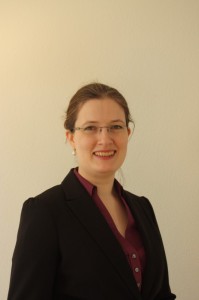
Esther studied Biology at Bielefeld University, where she obtained her Diploma in 2003 with a project comparing leghemoglobins during nodule and micorrhiza symbiosis in Medicago truncatula. For her PhD she went on to the University of Tübingen, where she joined the Lab of Claus Schwechheimer at the centre for molecular plant biology (ZMBP). In her PhD project she was working on the role of the COP9 Signalosome (CSN) in plant development. As a key finding she could show that csn mutants arrest in G2 phase of the cell cycle and that this arrest correlates DNA damage, which is a possible explanation for the csn mutant growth arrest. Subsequently, she was awarded an EMBO fellowship to join the lab in 2009. Here she changed to cell biology to continue Niko’s work on BRI1 trafficking. In 2011, Esther obtained a short term fellowship of the Japan Society for the Promotion of Science (JSPS), to work for three month at Tokyo University as a gues researcher in the Lab of Aki Nakano. After her return, she expanded her project and is now conducting a study comparing the effects of different dominant negative Rabs on BRI1 and other marker proteins. Esther left the university life and works as a Coodinating Editor for the Journal of Hepatology.
Julien Alassimone, Former PhD student
Before joining the Geldner Lab, Julien was interested in the possibility of improving crops by means of plant biotechnology. His Masters project was focused on studying plant adaptation to heavy metal stress at the department of Biochemistry and Molecular Physiology of Plants (BPMP) in Montpellier, France. He arrived in the early days of the lab, in October 2007, as Ph.D student. After measuring the rooms and participating in setting up the lab, he locked himself into the confocal room to describe how endodermal cells obtain their differentiation features. During his Ph.D, he investigated how these cells define membrane domains involved in the directional transport of nutrients. He also realized a forward genetic screen and identified a group of mutants defective in their Casparian Strip establishment; the schengen mutants. He considers being a part of the lab as “a unique, great and pleasant human adventure” that revealed his interest for developmental biology. Since March 2013, he moved to Dominique Bergmann’s Lab at the Stanford University (California) to investigate the connections between polarity establishment and the organization of asymmetric divisions. A project focused on another fundamental question: how does asymmetric cell division drive cell fate decisions in the stomata cell lineage?
Misako Yamazaki, Former Postdoc
Misako works at University of Zürich, Switzerland.
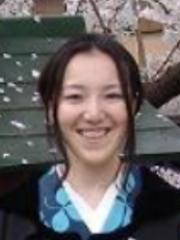
Misako is very interested in the molecular mechanism of membrane traffic machinery and the physiological function of it. In the laboratory of Ikuko Hara-Nishimura, Kyoto University in Japan (2002-2009) she performed a reverse genetic approach to several VPS (vacuolar protein sorting) genes. She examined the function of the retromer complex (named after retrograde transport coatmer) in Arabidopsis developing seeds and showed that the retromer complex is not only required for vacuolar protein sorting but also for plant growth, leaf senescence and embryogenesis (Plant Cell Physiol. 2008 Feb; 49(2): 142-56). These results imply that the membrane traffic by the retromer is important in a lot of developmental stages dependent on the cargos, the targets of the retromer. In Niko’s group she worked on the endodermal polar proteins and tried to identify the mechanism to establish and maintain the polarity in plants. In 2012, she moved to Kentaro Shimizu’s lab at Zurich University. There she is working on the molecular mechanisms of evolution.
Daniele Roppolo, Former Postdoc
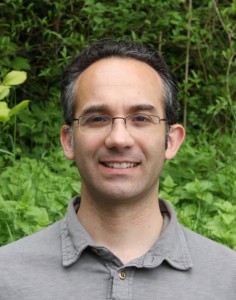
Daniele joined Nikos group in May 2008 and left 5 years later. His main contributions during these pleasant years of research were the identification of the CASPs and bark. He also reconstructed the phylogenetic history of the CASPs and established their link with the MARVEL protein family. Quoting him: “I worked in a fantastic environment doing good science with excellent colleagues. Niko offered me the possibility to grow in the plant biology field and all the members of the group contributed to the extremely enjoyable atmosphere (they also contributed to my work!).” From February 2013, he is project leader at the Institute of Plant Sciences at the University of Bern, where he is finding out how membrane fences are established in plants, how they do maintain polarity and to which extent local cell wall modifications are directed by plasma membrane protein scaffolds. He is also interested in the molecular mechanisms that establish tissue-specific gene expression and in the way these mechanisms mediate plant plasticity. Even though he is not working on them at the moment, he is still interested in the CASPs: if he were in the lab, he would probably fight against confocal resolution to understand how CASP domains from neighbouring cells get aligned.
Mª Carmen Rubio, Former Visiting Scientist
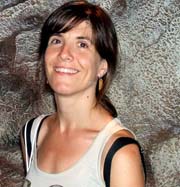
Mari Carmen studied chemistry at the University of Zaragoza (Spain). After getting her diploma, she did her PhD thesis in the laboratory of Manuel Becana at the Estación Experimental Aula Dei (EEAD-CSIC, Zaragoza), studying the superoxide dismutases in nodules of legumes at the biochemical level, as well as the effect of water stress on antioxidants of alfalfa (Medicago sativa) nodules. Then she got a postdoc position in the group of Herman Spaink at the University of Leiden (The Netherlands) where she continued studying the role of superoxide dismutases during root nodule development in the model legume Lotus japonicus. During her postdoc, she expanded her training with new skills and techniques on molecular and cell biology. She returned in May 2005 to the EEAD, where she got a permanent position in July 2008. In April 2011, she joined Geldner’s lab as a visiting scientist to study the role of reactive oxygen species in Casparian strip formation. Since August 2012, she is working again in the EEAD continuing with her studies on oxidative stress and also starting to work with CASP proteins in nodules.
Lothar Kalmbach, former Phd student
Currently Postdoctoral Research Associaten in Yrjö Helariutta‘ s group at SLCU
Contact
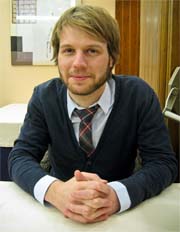
Lothar started studying biology in Mainz, Germany in 2004. After his 2nd year exams (Vordiplom) in 2006 he went to Umeå, Sweden and participated in a Master’s program in Plant and Forest Biotechnology. Upon his return to Germany in 2007 he continued his studies at the University of Würzburg. As his first scientific project he performed a brief electrophysiological characterization of the ligand-dependent gating of a potassium channel in maize. For his Diploma thesis he returned to Sweden and joined the group of Markus Grebe at the Umeå Plant Science Centre in 2009. He acquired a background in experimental plant cell biology, and performed a comprehensive analysis on leaf trichome orientation in Arabidopsis thaliana in a planar polarity context. Also, he characterized antibodies against a protein putatively involved in planar polarity signaling in Arabidopsis. Having decided to stay in science and to continue research in plant cell biology, he joined the Geldner lab as a PhD student in November 2010. Now he is looking for factors defining and organizing the Casparian Strip membrane domain in endodermal cells by a forward genetic approach.
Julien Spielmann, Former Masters student
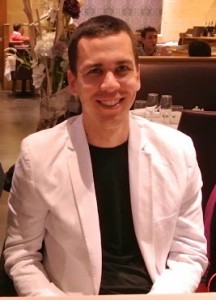
Julien started studying biology in the University of Lausanne in 2007. He joined our lab in February 2012 and obtained his master degree in January 2013. During his Masters he worked on root copper response at tissue and protein–levels. Using confocal microscopy, he localized different proteins involved in copper homeostasis and analyzed their expressions in different copper concentration. He investigated the role of the Casparian strip in copper metabolism and homeostasis. He was also interested in how copper availability in growth media can affect the lignifications of Casparian strips.
Catherine Schwab, Technician e-mail
Catherine is educated as a medical assistant. Her first job was in medical center in Geneva, where she gained experience from a medical laboratory in care and medical treatments. After a few years, she was recruited to Philip Morris in Neuchatel as a Lab Technician. Here she worked in the Control & Quality laboratory for many years, mainly doing GC/MS-based chemical analysis in tobacco. After that, she worked as a «Cigarette Specification Administrative», where she established technical sheets concerning the products and packaging of cigarettes. At the end of 2011, she was recruited by the University of Lausanne as a technician for the DBMV. She joined The Geldner lab in october 2014 as technical assistant, helping the group, as well as aiming to learn new techniques.
